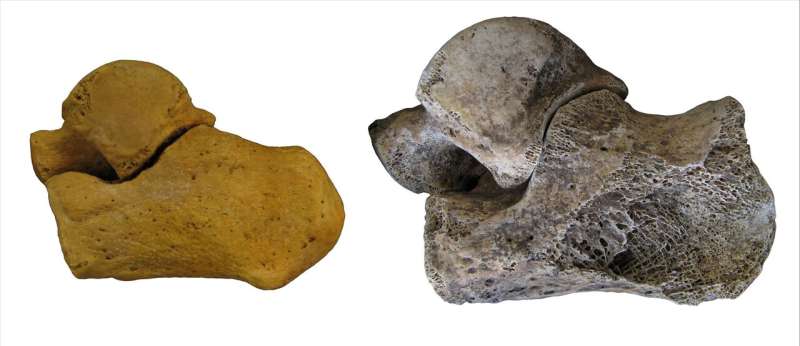New statistical formulas for assigning sex to fossils

The CENIEH researcher Adrián Pablos is co-author of a paper which offers a methodology for assigning the sex to fossils of Homo sapiens and opens up the possibility of applying it to species other than our own, as well as in forensic contexts for the identification of individuals.
Adrián Pablos, a scientist at the Centro Nacional de Investigación sobre la Evolución Humana (CENIEH), is a co-author of a recent publication in the journal Archaeological and Anthropological Sciences, led by Carmen Alonso-Llamazares, of the Universidad de Oviedo, which offers new statistical formulas for assigning sex to fossils from human feet.
Thanks to this study, more data about the paleobiology of human populations of the past can be obtained, and it opens up the possibility of using the same methodology to discover what representatives of the genus Homo of species different from our own were like. Furthermore, it is also applicable in forensic contexts for the identification of individuals.
Normally, when isolated human fossils are recovered from archaeological sites, it is very difficult to assign a sex to them. In the case of fossils from feet, it is usual to resort to mathematical formulas based on current populations, which enable an approximation to the sex of fossil individuals on the basis of the greater size of the men, in general, compared to the women within the same population.
However, as Pablos explains, "the problem is that there exist major differences between different populations, which means that the results are not very reliable when the formulas mentioned are applied to a population other than that used to calculate those mathematical formulas."
In this study, different discriminant formulas were calculated using foot bones, such as the astragalus and the calcaneus, and to make the method more robust, those formulas were tested with individuals from the same population whence the formulas came, and likewise they were checked against formulas and data from other, different populations.
"Subsequently, these equations were put to the test again with fossils whose sex is known, to verify their reliability. In those cases where the reliability percentage was sufficiently high, these formulas were applied to fossils whose sex is unknown, thus conferring greater robustness upon the method." comments Alonso-Llamazares.
More information: Carmen Alonso-Llamazares et al. Sex estimation from the calcaneus and talus using discriminant function analysis and its possible application in fossil remains, Archaeological and Anthropological Sciences (2019). DOI: 10.1007/s12520-019-00855-y
Provided by CENIEH




















